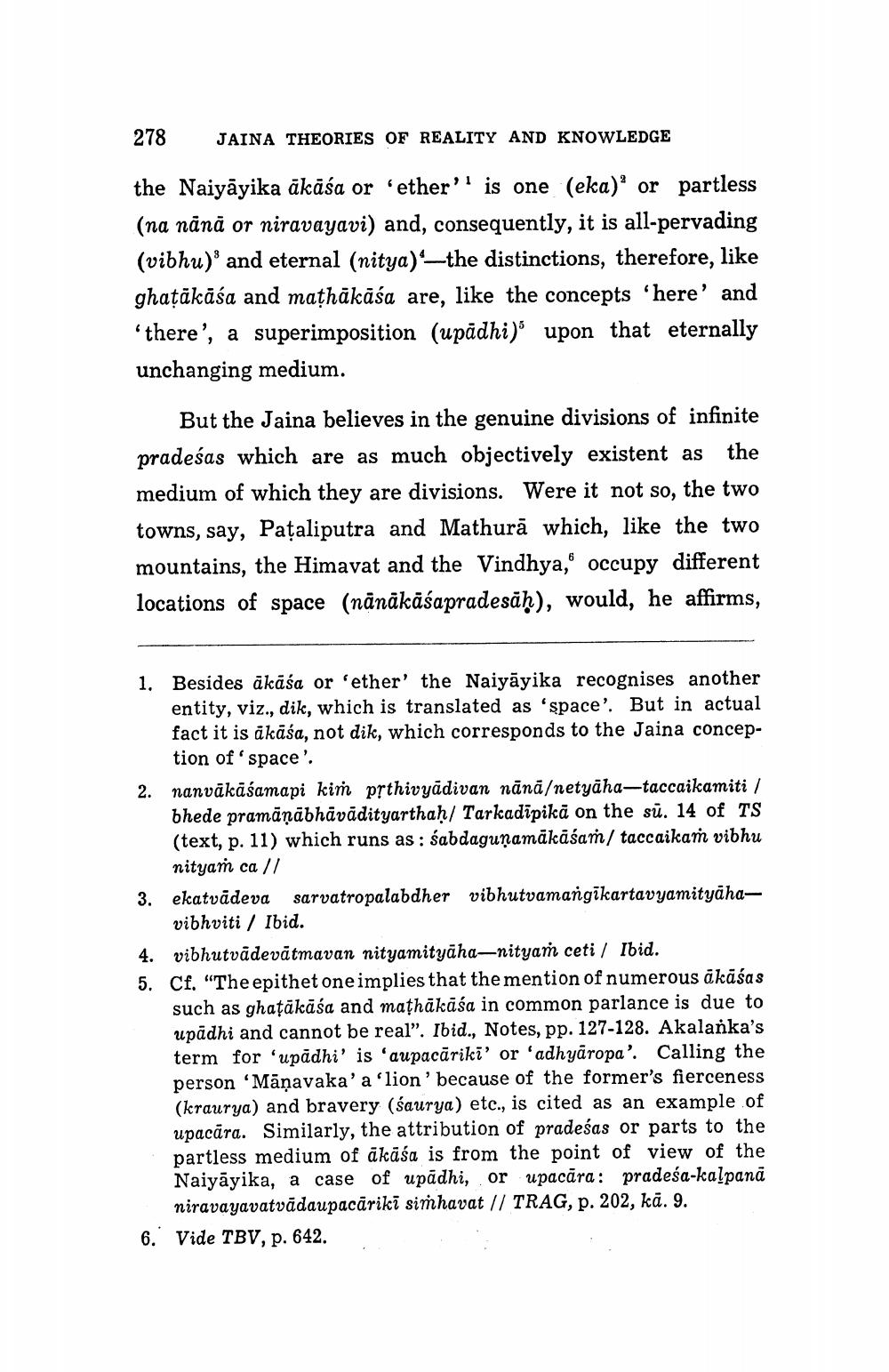________________
278
JAINA THEORIES OF REALITY AND KNOWLEDGE
the Naiyayika ākāśa or 'ether' is one (eka) or partless (na nānā or niravayavi) and, consequently, it is all-pervading (vibhu) and eternal (nitya)-the distinctions, therefore, like ghaṭākāśa and maṭhākāśa are, like the concepts 'here' and 'there', a superimposition (upadhi) upon that eternally unchanging medium.
But the Jaina believes in the genuine divisions of infinite pradeśas which are as much objectively existent as the medium of which they are divisions. Were it not so, the two towns, say, Pataliputra and Mathura which, like the two mountains, the Himavat and the Vindhya," occupy different locations of space (nānākāśapradesăḥ), would, he affirms,
1. Besides ākāśa or 'ether' the Naiyayika recognises another entity, viz., dik, which is translated as 'space'. But in actual fact it is ākāśa, not dik, which corresponds to the Jaina conception of 'space'.
2. nanvākāśamapi kim prthivyādivan nānā/netyäha-taccaikamiti / bhede pramāṇābhävädityarthaḥ/ Tarkadipika on the su. 14 of TS (text, p. 11) which runs as: sabdaguṇamākāśam/ taccaikam vibhu nityam ca //
3. ekatvadeva sarvatropalabdher vibhutvamangikartavyamityāhavibhviti/ Ibid.
4. vibhutvadevätmavan nityamityäha-nityam ceti / Ibid.
5. Cf. "The epithet one implies that the mention of numerous ākāśas such as ghaṭākāśa and maṭhākāśa in common parlance is due to upadhi and cannot be real". Ibid., Notes, pp. 127-128. Akalanka's term for 'upadhi' is 'aupacāriki' or 'adhyāropa'. Calling the person 'Māṇavaka' a 'lion' because of the former's fierceness (kraurya) and bravery (saurya) etc., is cited as an example of upacara. Similarly, the attribution of pradeśas or parts to the partless medium of ākāśa is from the point of view of the Naiyayika, a case of upadhi, or upacara: pradeśa-kalpana niravayavatvadaupacāriki simhavat // TRAG, p. 202, kā. 9. 6. Vide TBV, p. 642.




